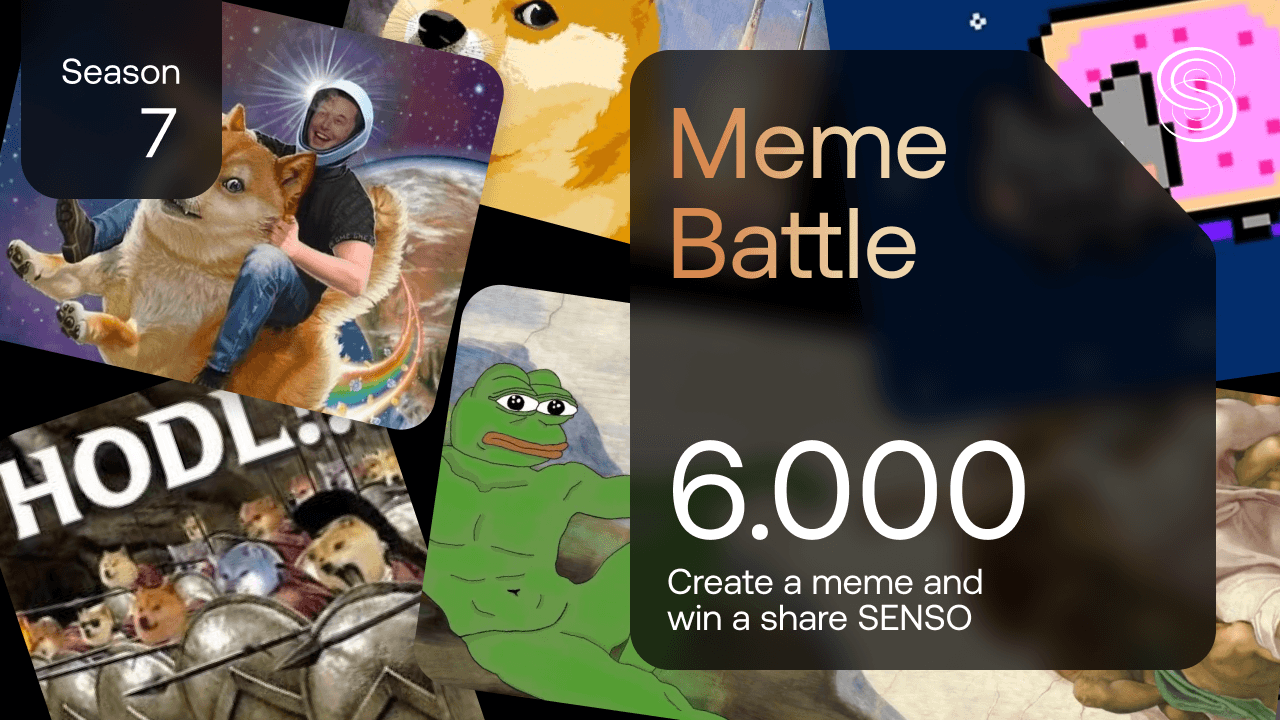Despite being decade’s old, VR and AI are in the midst of a full-throttled renaissance as interest for these technologies surges to high - and then even higher - peaks, seemingly by the day.
Helping carry much of the hype has been the growing popularity of AI chatbots like ChatGTP and Bing, alongside VR-based games such as Beat Saber and Half-Life.
All the while, tech titans remain locked in a hotly-contested race for metaverse domination, hoping to be the first to create sprawling immersive and realistic virtual worlds where users can engage in a variety of activities using digital doppelgangers (avatars).
A quick glance at some of the proto-metaverses available, however, reveals a somewhat underwhelming exploration of barren and cartoonish virtual spaces, apparently devoid of all the futuristic experiences we’ve been promised.
But with the field of generative AI rapidly evolving, change is just around the corner.
Today, we are taking a closer look at the metaverse and exploring the role of generative artificial intelligence in shaping this new technological frontier.
What Is The Metaverse
Let’s cover our basics first and start by defining the metaverse, a notoriously vague term.
The concept of the metaverse was first introduced by science fiction author Neal Stephenson in his 1992 novel Snow Crash. In the book, the metaverse was a shared virtual space where people could interact with one another in a fully immersive manner. Since then, the idea has been explored in various forms of media, including sci-fi movies, video games, and TV shows.
In recent years, however, the metaverse has become more than just a topic for science fiction productions; with the advent of virtual reality and other immersive technologies, the metaverse is now becoming a reality.
Companies like Meta, Microsoft, and others are investing heavily in the development of the metaverse, recognizing its potential to be the next big thing in digital development.
As we see it today, the metaverse is essentially a shared virtual space that allows people to interact with one another in a way that feels natural, regardless of their physical location. In other words, it is a virtual world that is designed to be as immersive and engaging as the real world.
One of the key aspects of the metaverse is its ability to facilitate social interaction. People can interact with one another in a variety of ways, such as attending virtual events, playing games, and even exploring virtual worlds together. This social aspect of the metaverse is one of its most appealing features, as it allows people to connect with others in a way that is not possible through traditional forms of media.
Another key aspect of the metaverse is its ability to create new forms of content. In the metaverse, anything is possible. People can create their own virtual worlds, design their own avatars, and even program their own virtual experiences.
This opens up a whole new world of possibilities for creators, as they can now design content that is not limited by the physical world.

The Role of Generative AI In The Metaverse
One of the most exciting aspects of the metaverse is the potential for generative artificial intelligence to play a significant role in shaping the types of experiences and environments inside it.
Generative AI is a form of artificial intelligence that, unlike standard forms of the tech, is capable of generating original outputs like creating new content, brainstorming ideas, or even building entire virtual worlds instead of simply processing data and completing specific tasks. In other words, GAI is very different from Siri.
ChatGPT, for example, is considered a generative AI application as it provides extremely convincing and ‘natural-sounding’ responses to user prompts, almost as if you’re having a conversation with another human rather than interacting with a machine.
And as generative artificial intelligence continues becoming more powerful and sophisticated, it’s emerging as an ideal tool for building the metaverse and developing the kind of immersive experiences it needs, particularly when it comes to creating endless hours of content. GAI is incredibly flexible and adaptable, being able to create a wide range of outputs.
When it comes to the metaverse, we are already seeing a pathway for generative AI to create complex and realistic images and videos to support new virtual reality environments.
Another key benefit of this technology is its ability to create content in real time, allowing users to dynamically engage with content that could, for example, be tailored to their specific interactions. Moreover, generative AI can help a metaverse platform personalize experiences by ensuring that experiences are created and personalized for each user. That’s something that traditional forms of digital media can’t achieve.
As an important tool in assisting human creativity, generative AI is already seeing its first concrete applications in Web3 gaming and helping create a more reactive and challenging experience for gamers.
For example, AI Dungeon is a text-based adventure game that uses GAI to dynamically generate new content based on player interactions. Another example is Promethean AI, which is a tool that allows creators to design virtual worlds using generative artificial intelligence.

Generative AI Applications In The Metaverse
There are a few areas in particular where the most exciting applications of GAI in the metaverse are emerging:
Avatars
One of the most exciting applications of generative AI in the Metaverse is the creation of realistic avatars. With the help of generative algorithms, it is now possible to create avatars that look and move like real people, with subtle facial expressions and natural movements. This is a significant improvement over the stiff and robotic avatars of the past, allowing for more immersive and realistic interactions in the metaverse.
Combining user-generated content and generative AI is fast becoming a popular trend in gaming. For example, cross-game avatar platform Ready Player Me recently launched a new feature allowing players to use generative AI to craft their own avatar outfits using DALL-E’s generative AI art platform to use text prompts to create new looks.
Virtual Identities
Generative AI is helping not only create photorealistic avatars but also generate unique personalities and biographies. That’s the case with Sensorium Galaxy, the world’s first AI-inhabited metaverse. Inside this virtual space, AI-driven avatars can be fitted with personality traits and backstories that shine through when users engage in interactions with them. Thanks to their pioneering generative AI capabilities, these virtual beings are capable of retaining long-term memories , context of previous interactions and have seamless and casual conversations.
Taking it a step further, Sensorium has also unveiled a new metaverse experience based on an AI-controlled avatar of the late surrealist artist Salvador Dali. By entering this space, users have the opportunity of meeting and chatting with a ‘resurrected’ Dali, whose virtual persona is capable of staying true to the larger-than-life presence of the visionary artist.
Generating New Talents
User-generated content is a core aspect of the metaverse, empowering both humans and AI entities to take full ownership of their virtual experiences. Sensorium Galaxy’s AI avatars rely on extensive generative AI skills to power conversations and musical productions, with AI DJs being able to create music from a mix of over 60 different genres.
In 2021, this metaverse became the first to support the release of the world’s first music album by a social AI-driven avatar with the debut of Kàra Màr.
Music fans can take part in futuristic, heart-racing concerts as part of Sensorium’s streaming service, where AI DJs lead 24/7 sets across intergalactic locations. But with the help of generative AI, users can foster their own talents in the metaverse, including music, dancing, digital art and more.
Environments
Another area where generative AI is beginning to be used in the metaverse is in the creation of virtual environments. Based on complex machine learning algorithms, developers can create vast and complex virtual worlds with realistic textures, lighting, and physics. Moreover, the technology can be used to generate music, videos, games and other types of content experiences that can be used within a virtual world. This allows for more engaging and immersive experiences across metaverse worlds, with users able to explore these spaces in greater detail.

Closing Thoughts
The potential of the metaverse is enormous. It could become the next big platform for social media, entertainment, and even commerce. But to truly realize its potential, it will need to be built on a foundation based on diversity, inclusivity and compelling content, to reflect the wide range of people who will be using virtual words.
One of the key benefits of generative AI is its ability to learn from data. By analyzing large datasets, this technology can identify patterns and create new content based on that information. This means that it can adapt and evolve over time, becoming more sophisticated and capable as it learns from its experiences with users and beyond.
But while generative AI has the potential to be a powerful tool for building the metaverse, there are still many challenges to overcome, especially when it comes to monitoring outputs to ensure they’re not inappropriate, biased or even harmful. The failure to do so could lead to the creation of virtual environments or characters that perpetuate stereotypes or discrimination.
That said, there’s no doubt that the intersection between the metaverse and generative AI is fueling exciting deployments in the emerging tech sector and quickly becoming the key to unlocking a new era of digital experiences and virtual interactions, enabling immersiveness, interactivity and personalization in virtual worlds.

Closing Thoughts
The potential of the metaverse is enormous. It could become the next big platform for social media, entertainment, and even commerce. But to truly realize its potential, it will need to be built on a foundation based on diversity, inclusivity and compelling content, to reflect the wide range of people who will be using virtual words.
One of the key benefits of generative AI is its ability to learn from data. By analyzing large datasets, this technology can identify patterns and create new content based on that information. This means that it can adapt and evolve over time, becoming more sophisticated and capable as it learns from its experiences with users and beyond.
But while generative AI has the potential to be a powerful tool for building the metaverse, there are still many challenges to overcome, especially when it comes to monitoring outputs to ensure they’re not inappropriate, biased or even harmful. The failure to do so could lead to the creation of virtual environments or characters that perpetuate stereotypes or discrimination.
That said, there’s no doubt that the intersection between the metaverse and generative AI is fueling exciting deployments in the emerging tech sector and quickly becoming the key to unlocking a new era of digital experiences and virtual interactions, enabling immersiveness, interactivity and personalization in virtual worlds.




